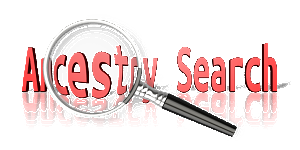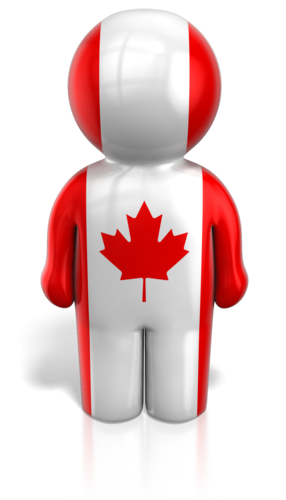Blog

Check out this New First Look at Who Do You Think You Are?
Who Do You Think You Are? is coming to the TLC channel, and if this new “first look” is any indication, it’s going to be a terrific new season on a new channel!
Kicking off the series on July 23 is Kelly Clarkson, followed by Christina Applegate (July 30), Chelsea Handler (Aug. 6) and then Zooey Deschanel (Aug. 13). Additional participants include Chris O’Donnell, Jim Parsons, Cindy Crawfordand Trisha Yearwood.
Here’s a first look at Who Do You Think You Are? below:

Old Search Sees Last Days at Ancestry – New Tools on Horizon
 As I mentioned in Genealogy Gems Podcast episode 156 Ancestry is working on some new enhancements to the website’s search function. What I didn’t say then, but what has been officially announced now, is that “Old Search” is being phased out. More specifically, the best parts of it are being consolidated into the current search so that we are all on the same page with one search tool.
As I mentioned in Genealogy Gems Podcast episode 156 Ancestry is working on some new enhancements to the website’s search function. What I didn’t say then, but what has been officially announced now, is that “Old Search” is being phased out. More specifically, the best parts of it are being consolidated into the current search so that we are all on the same page with one search tool.
In episode 156 I also talked about technological “mayhem.” The chaos that follows changes made by technology companies to their products. If you felt your blood pressure start to rise at the news that Old Search is on it’s last leg, I encourage you to take a listen to that episode for a fresh perspective on the effects of change.
According to Ancestry this change impacts a small percentage of users. (Although from past changes in the genealogy community it’s clear that small groups can have big voices!) Are you one of those users in the 2% who still relies on Old Search? Do you consider this change another in a long line of “technological mayhem” or do you welcome the evolution of Ancestry’s search function? Read the following announcement from Ancestry (note that the bolding of the last paragraph is mine – I think it is key) and leave your comments below.
“Ancestry.com is continuing our efforts to improve the search experience across Ancestry.com and will be making changes to our search functionality in the upcoming months. Some features will be added and some will be discontinued. As part of the 2% of our subscribers that use the old search function on the site, we know that you are passionate about the search experience on Ancestry.com and we are reaching out to you to get input on potential improvements. We hope you will take the opportunity to share your insights and feedback on our plans.
To identify which areas of the experience we should focus on this year, we have drawn on customer input, usage data, usage patterns and our old search function for inspiration. From all of that, we are looking at making your time on Ancestry.com more productive by improving these areas of the search experience in 2013:
- More relevant search results with the best results at the top
- Easier refining and control of your search results
- Keeping a better history of the work you have done
- Publishing more new content and more corrections to existing content
- Performance improvements to return results faster
As we begin to make these improvements, we will no longer maintain two separate search systems for the site. Maintaining two systems limits the resources we can use to make improvements and increases the complexity of every improvement we try to make. Additionally, continuing to maintain the two systems limits our ability to direct more investment into other areas like adding more record collections and correcting existing collections.
Based on that, as a part of the work this year we will be bringing together the two search experiences into a single search experience on Ancestry.com. We hope to bring forward the best features of both the old and new search systems into the consolidated experience to facilitate the transition for our users and to improve the overall search experience. We expect to discontinue the old search function as a separate experience within the next 6 months.”
After the initial uproar online about the changes mentioned above, Ancestry reached out again to emphasize their desire to get user’s feedback. You can take the survey here: http://ancestry.
According to Ancestry, many of the recent concerns and comments have cited functionality that actually exists in current search, as well as in old search – specifically:
- Ancestry’s current search experience allows users to view search results as a list of ranked records or as a consolidated list of categories.
- The current search experience allows users to do “Exact Match” searches.
- The current search experience allows users to specify a “Collection Priority” to filter results by country.
Crista Cowan has put together an educational video which demonstrates this functionality in the current search experience:
Ancestry also has an article which does a side-by-side explanation of how to achieve the same types of results with the current search as in Old Search: http://ancestry.

Find Canadian Ancestors in Censuses from 1825 to 1921
 If you have Canadian kin, you’ll be pleased to hear that the 1825 census of Lower Canada is now searchable online, and the 1921 census will soon be available online, too!
If you have Canadian kin, you’ll be pleased to hear that the 1825 census of Lower Canada is now searchable online, and the 1921 census will soon be available online, too!
The 1825 census of Lower Canada counted nearly half a million people. Heads of household were actually named, with other members of the household counted by category. You can search by household name or geographic location.
The 1921 census counted 8.8 million people in thousands of communities across Canada. According to the Library and Archives Canada Blog, the population questionnaire had 35 questions. The census also collected data on “agriculture; animals, animal products, fruits not on farms; manufacturing and trading establishments; and [a] supplemental questionnaire for persons who were blind and deaf. This represents a total of 565 questions.” The census was released this past June 1 from the national Statistics office to the Library and Archives. That office is processing and scanning the nearly 200,000 images for public use. It hopes to have them posted soon.
Here’s a sample page from the 1921 census population schedule:
We think of Canada as a real melting pot today—or salad bowl, as they prefer. That wasn’t always the case. The 1825 census of Lower Canada counted mostly Europeans of French extraction. In 1901, 70% of Canadians claimed either British or French heritage. But in the first two decades of the 1900s, a huge immigration boom occurred that reached well beyond England and France. So the folks who show up on the 1921 census represented a newly multicultural Canada!
Start looking for your Canadian ancestors in the Library and Archives Canada’s popular Census Indexes, which include that 1825 census and a new version of the 1891 census, too. Watch the website for the 1921 census.
If your family arrived in Canada after the 1921 census, check out the website for The Canadian Museum of Immigration at Pier 21, where a million immigrants landed between 1928-1971.





